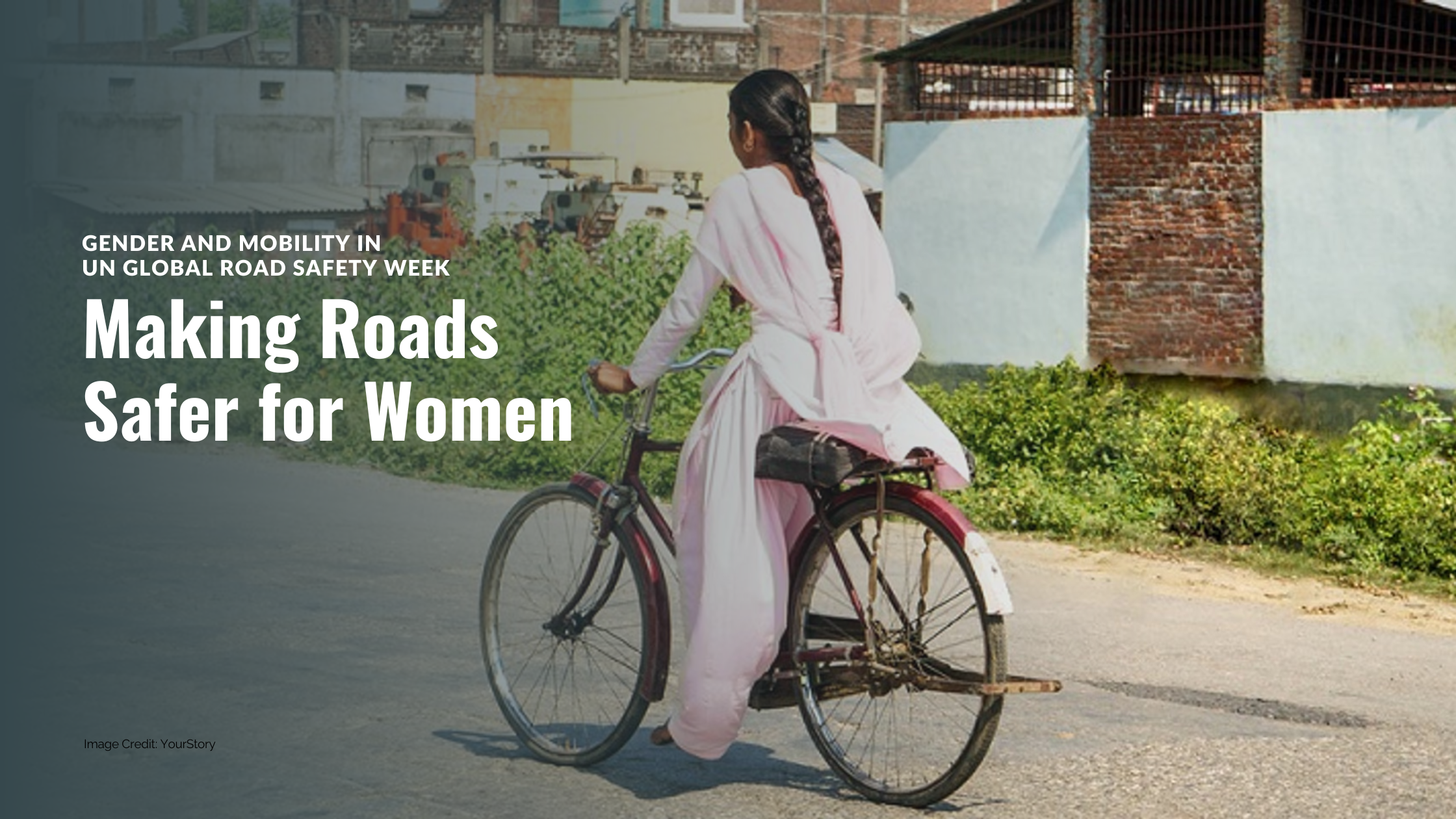
12 May Making Roads Safer for Women: Gender and Mobility in UN Global Road Safety Week 2025
Every year, the UN Global Road Safety Week ignites international discussions regarding safer roads, improved road infrastructure, and the collective role of road users. While road safety affects everyone, it impacts women disproportionately. This year, during UN Global Road Safety Week 2025, the theme of prioritizing cyclists and pedestrians safety resonates particularly with the challenges women face on India’s roads.
Walking and cycling are not always a matter of choice. For many girls and women, particularly in lower-income or rural areas, these modes of transport are the only practical means of getting around. However, the roads they walk and cycle on are seldom planned with their safety in mind.
In cities like Lucknow, Guwahati, and Patna, dark footpaths, crumbling sidewalks, and a lack of cycling tracks are daily hazards. The consequences for women are even more severe. It’s not just the physical danger of uneven pavements or absent bike lanes; it’s the harassment and fear that women endure. A simple commute, whether to school or work, becomes fraught with anxiety and danger. According to a 2024 study by the Indian Road Safety Research Group, nearly 70% of women report feeling unsafe while walking or cycling in urban areas, with more than 50% citing harassment as the primary reason for their discomfort.
The UN Women report of early 2025 recognized that though India is “making noticeable strides” on gender equality through budgeting and policies, mobility and safety continue to be strong hurdles. “Social norms still govern where and how women should move,” said Anita Bhatia, Deputy Executive Director at UN Women. “And road safety has to come into this.” This year’s Road Safety Week is not merely about infrastructure. It’s about fairness. It’s about asking: who gets to feel safe on the road, and who doesn’t? It’s about challenging the status quo and recognizing that mobility is not just a public health issue, but also a gender equality concern.
India’s signing of the Marrakech Declaration at the Fourth Global Ministerial Conference on Road Safety in February 2025 marks a pivotal moment. It demands that road safety be framed as a public health and gender equality concern, not simply a traffic issue. This shift calls for a reimagining of how cities are planned, and for road safety to be viewed through the lens of inclusivity and fairness.
Grassroots voices are also growing louder. In Delhi, Asha Devi, who leads a local women’s mobility group, said during a panel on pedestrian rights:
“We’ve stopped accepting that fear is part of our daily commute. Safe mobility isn’t a luxury, it’s our right.”
This sentiment resonates with millions of women across India who face the daily challenge of navigating unsafe roads. So, what does gender-responsive road safety actually look like?
It is streetlights that function, particularly on schoolgirls’ and working women’s routes. It is zebra crossings that are not worn out and overlooked. It is cycle lanes that do not vanish after 200 meters. And it is city planners who consult with women when designing cities.
Cities around the world have already shown how gender-sensitive design can improve safety. In Paris and Bogotá, separate cycle lanes for women and well-lit pedestrian paths have helped make transportation safer and more accessible. These models can and should be replicated in Indian cities.
There is momentum, indeed. But it must turn into a movement. If Road Safety Week is to be anything more than a thousand tweets, we need to consider safety not only through the prism of speed and cars but through the everyday lives of women who are most vulnerable when that safety doesn’t exist.
Making roads safer for women isn’t merely a matter of lives saved. It’s a matter of lives transformed. Safer mobility leads to better access to education, work, and public spaces, empowering women to take control of their lives and futures.
Join the movement to make roads safer for women. Share your thoughts, support local safety campaigns, or advocate for better infrastructure in your city. Let’s ensure that road safety is not just about preventing accidents, but about creating a world where women’s rights to safe and equitable mobility are recognized and upheld.

